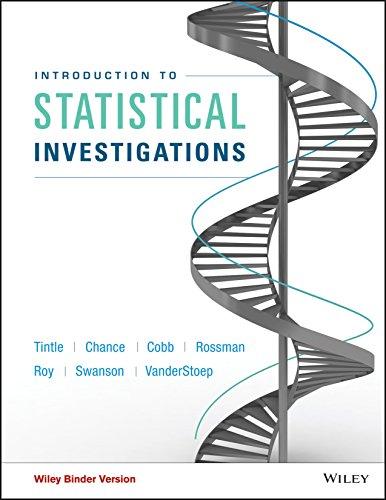In a randomized, double-blind study reported in the Journal of American Medical Association, researchers Waber et al.
Question:
In a randomized, double-blind study reported in the Journal of American Medical Association, researchers Waber et al. (2008) administered a pill to each of 82 healthy paid volunteers from Boston, Massachusetts, but told half of them that the drug had a regular price of $2.50 per pill, whereas the remaining participants were told that the drug has a discounted price of $0.10 per pill, mentioning no reason for the discount. In the recruitment advertisement the pill was described as an FDA-approved “opioid analgesic,” but in reality both groups were administered placebo pills.
To simulate pain, the participants were administered electric shocks to the wrist, and the researchers recorded whether subjects reported a reduction in pain aft er taking the pill. Of the 41 people in the regular-price pill, 35 reported a pain reduction, whereas of the 41 participants in the discount- price pill, 25 reported a pain reduction.
Is it valid to use the theory-based approach to examine whether the proportion of subjects reporting reduction in pain among those who received the regular-price pill is significantly different from the proportion of subjects reporting reduction in pain among those who received the discountprice pill? Explain your reasoning.
Step by Step Answer:

Introduction To Statistical Investigations
ISBN: 9781118172148
1st Edition
Authors: Beth L.Chance, George W.Cobb, Allan J.Rossman Nathan Tintle, Todd Swanson Soma Roy





